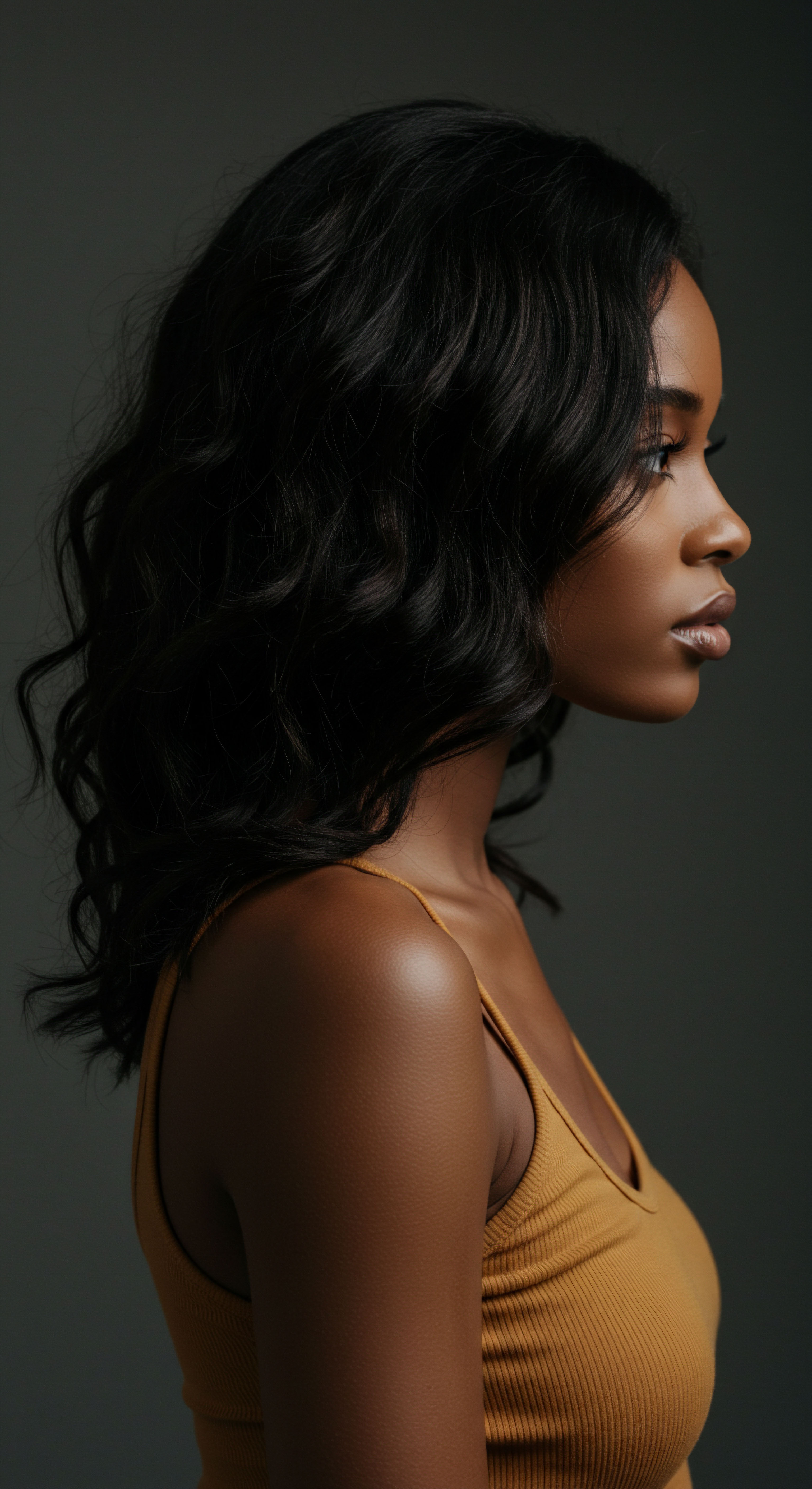
Roots
Imagine a whisper carried on the wind, a memory held in a single strand of hair. For generations, the care of textured hair has been more than a mere routine; it has been a dialogue with ancestry, a connection to cultural identity, and a quiet affirmation of self. This deep connection to heritage is not simply anecdotal; it holds profound truths about the very structure of textured hair, truths that modern science is now beginning to articulate with precision.
We look to the past not with a nostalgic gaze, but with a discerning eye, seeking the wisdom that time has preserved and science can now illuminate. What if the gentle touch of a grandmother’s hand, the rhythmic parting of coils, or the natural remedies passed down through oral tradition held secrets we are only now fully understanding?
The unique morphology of textured hair, with its characteristic spirals and bends, shapes its interaction with the world and the substances applied to it. Unlike straight hair, which allows for more uniform diffusion of external molecules, textured hair presents areas of varying density. This distinct structure means that historical practices, often developed through centuries of intuitive observation, frequently addressed the particular needs arising from this inherent design. The ancestral knowledge of using specific plant extracts or gentle manipulations often aligned with the hair’s biomechanical realities, even without a microscope to reveal the cuticle’s delicate architecture.

Hair Anatomy and Physiology Specific to Textured Hair
Textured hair, particularly afro-textured hair, possesses a distinct helical structure, meaning it grows in a coiled or zigzag pattern from an elliptical follicle. This shape contributes to its density and volume, but also presents unique challenges. The twists and turns along the hair shaft create points of weakness, making it more susceptible to breakage from mechanical stress.
The cuticle, the outermost protective layer of the hair, tends to be more lifted at these curves, potentially leading to increased moisture loss and greater susceptibility to external damage. This inherent fragility, understood intuitively by past generations, led to care practices focused on minimizing manipulation and maximizing hydration.
Consider the role of the hair cuticle, a layer of overlapping scales. When hair is healthy, these scales lie flat, reflecting light and retaining moisture. For textured hair, the natural bends mean these scales are often not as uniformly flat, contributing to its distinctive appearance but also to its propensity for dryness and tangling. This structural reality makes techniques that smooth the cuticle, such as applying certain oils or gentle detangling, particularly beneficial.
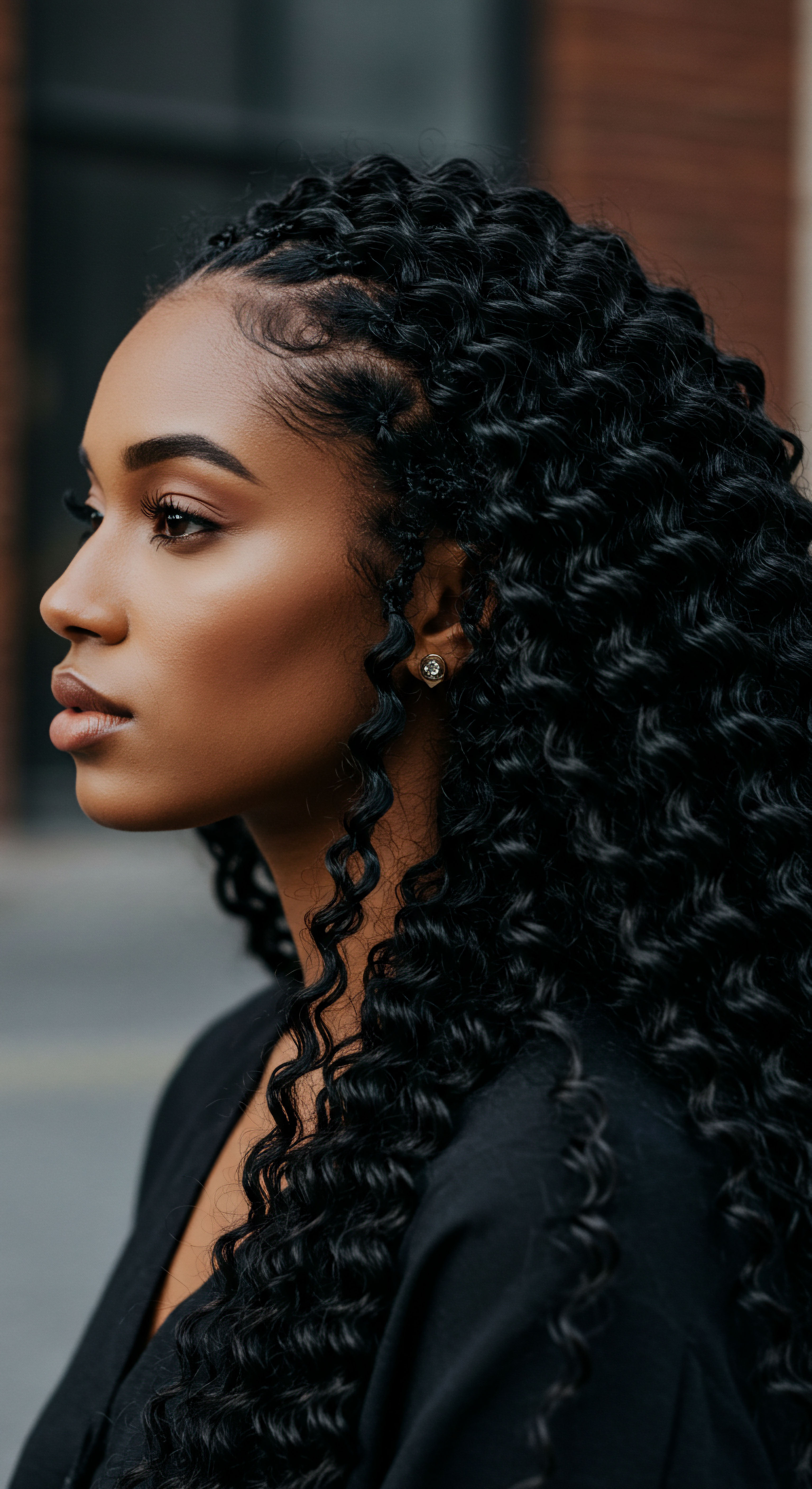
Textured Hair Classification Systems
Historically, hair was often described by visual observation, with terms varying widely across cultures. Today, while formal classification systems like the Andre Walker Hair Typing System (often categorized as 1 for straight, 2 for wavy, 3 for curly, and 4 for coily) provide a framework, the true diversity within textured hair transcends simple numbers. Scientific understanding now extends beyond these broad categories, recognizing the intricate variations in curl pattern, strand thickness, and density. This detailed understanding allows for a more personalized approach to care, echoing the ancestral wisdom that recognized individual hair needs.
The inherent structure of textured hair, with its unique helical shape and cuticle arrangement, informed historical care practices long before scientific instruments revealed its microscopic details.
Recognizing the vast spectrum of textured hair is paramount. The difference between a loose curl and a tight coil influences everything from product absorption to styling resilience. Early descriptions, while not scientifically precise, often acknowledged these variations through cultural terms that guided appropriate care. Modern research continues to refine these understandings, moving beyond simplistic classifications to a more nuanced appreciation of individual hair characteristics.
- Hair Density ❉ The number of individual hair strands on the scalp, which can vary significantly even within the same curl pattern.
- Strand Diameter ❉ The thickness of an individual hair fiber, ranging from fine to coarse, influencing how hair responds to products.
- Porosity ❉ The hair’s ability to absorb and retain moisture, directly related to the condition of the cuticle layer.
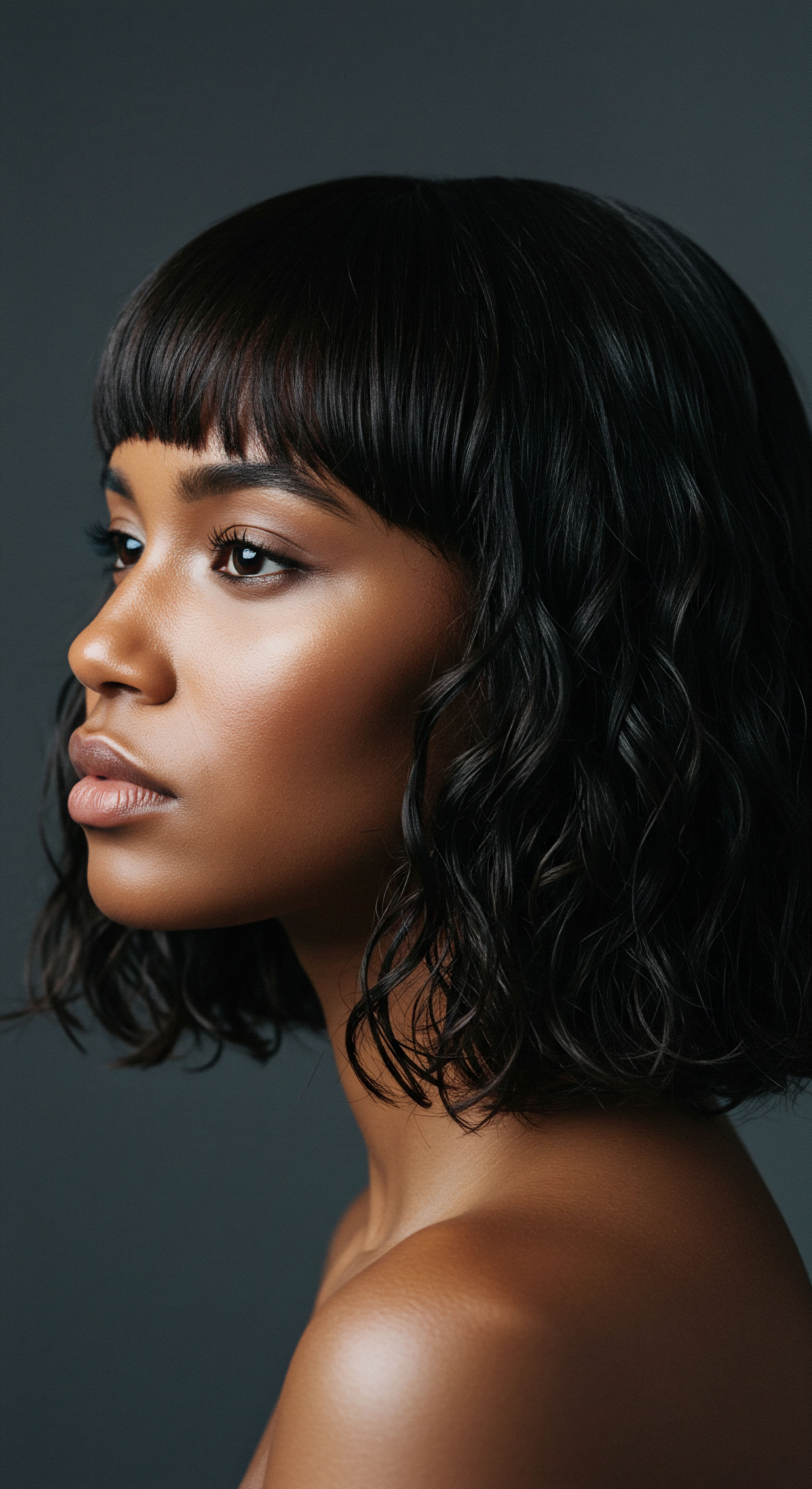
The Essential Lexicon of Textured Hair
The language we use to speak about textured hair has evolved, reflecting both scientific advancements and a renewed cultural appreciation. Terms like ‘coily,’ ‘kinky,’ ‘curly,’ and ‘wavy’ are more than just descriptors; they are acknowledgements of diverse beauty. Understanding terms like ‘shrinkage,’ the phenomenon where textured hair appears shorter than its actual length due to its curl pattern, helps to contextualize styling choices and manage expectations.
Similarly, ‘single strand knots’ or ‘fairy knots’ are a common occurrence for highly coiled hair, arising from the hair’s natural tendency to coil upon itself, leading to tangles and breakage. These realities are deeply considered in historical care, often through practices that aimed to minimize such occurrences through gentle handling and specific detangling methods.
This lexicon also includes words for specific hair conditions that textured hair is more prone to, such as ‘traction alopecia,’ a form of hair loss caused by prolonged tension on the hair follicles, often from tight hairstyles. Awareness of this condition, though given a modern medical name, has historical roots in warnings against excessively tight braiding or adornment practices.
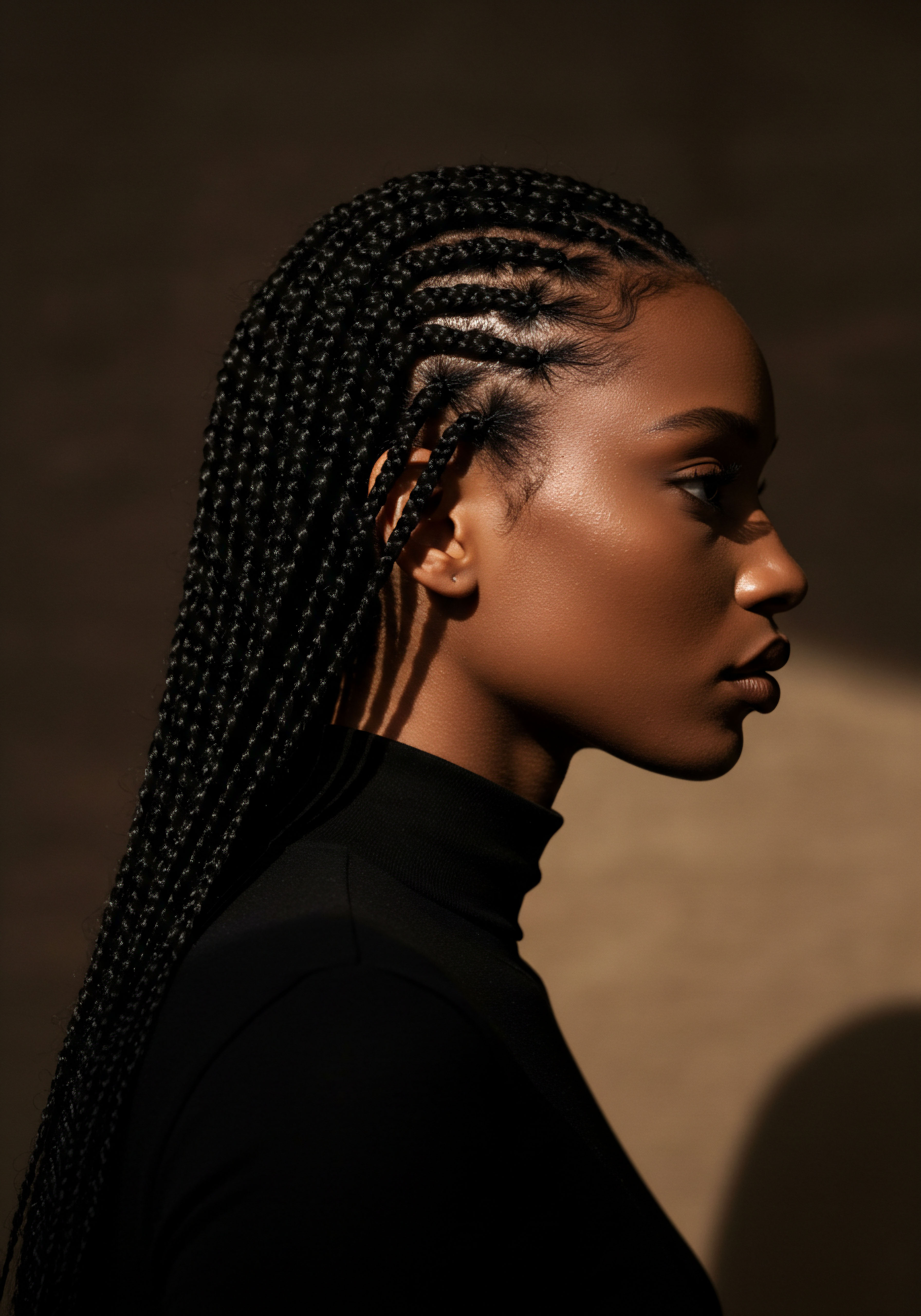
Hair Growth Cycles and Influencing Factors
Hair growth follows a cyclical pattern ❉ the anagen (growth) phase, catagen (transitional) phase, and telogen (resting) phase. While these cycles are universal, their duration can vary among individuals and hair types. For textured hair, the anagen phase may be shorter on average compared to straight hair, which can influence perceived length retention. This biological reality highlights why practices aimed at preserving existing length, such as protective styling and minimizing breakage, have been so central to historical care.
Environmental factors, diet, and overall health also play a significant role in hair health and growth. Ancestral diets rich in natural, unprocessed foods likely provided essential nutrients for robust hair. Traditional practices often included topical applications of nutrient-rich plant extracts, recognizing their benefit for scalp health and hair vitality. The understanding that healthy hair begins from within, nurtured by both internal wellness and external care, remains a timeless truth.
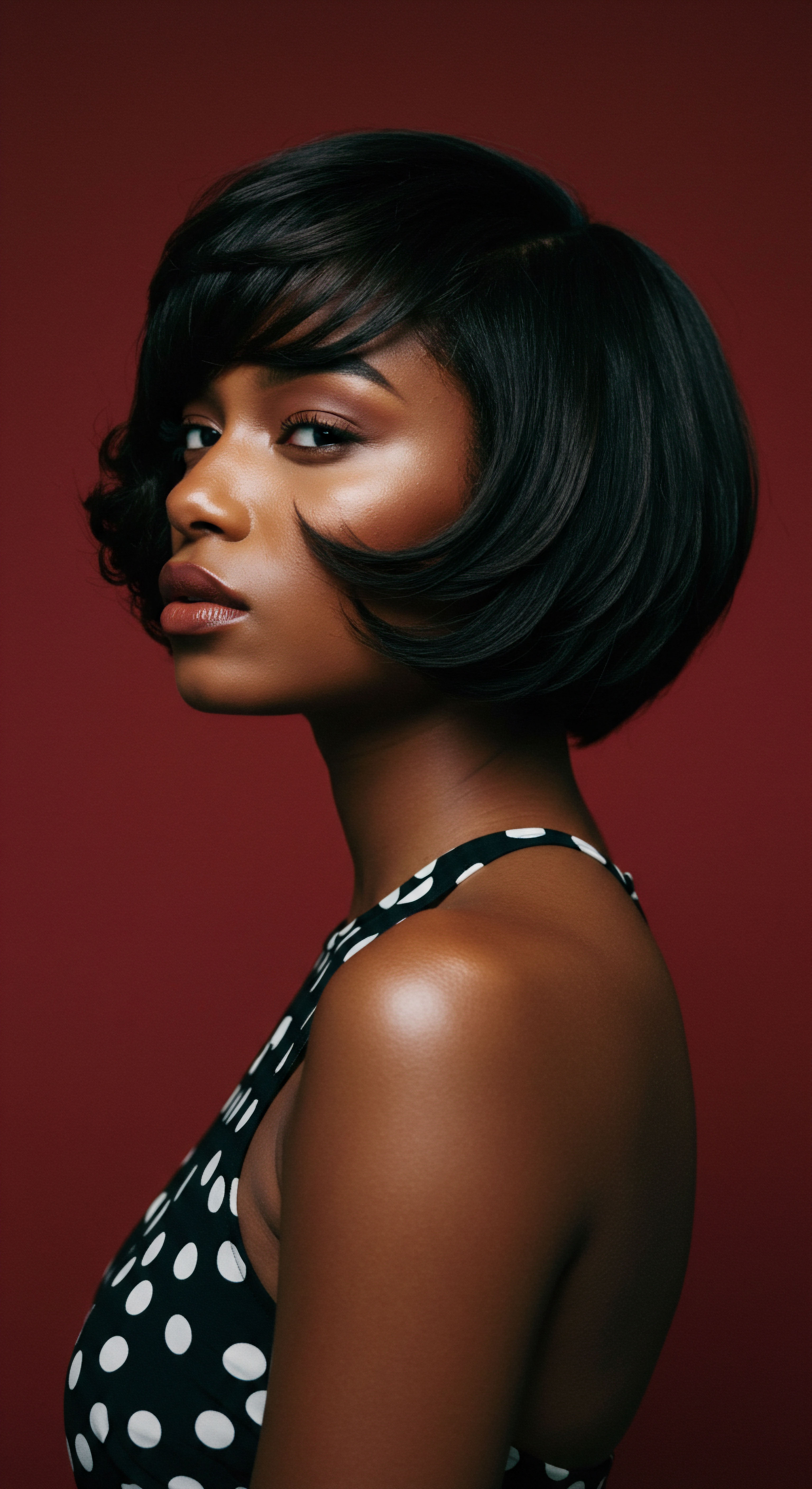
Ritual
Stepping from the foundational understanding of textured hair, we now turn to the daily rhythms and intentional practices that bring its unique beauty to life. These are the rituals, the deliberate acts of care that transcend simple grooming, transforming into moments of connection with one’s self and one’s heritage. From the gentle art of detangling to the careful placement of a protective style, each movement carries echoes of generations past, refined by intuitive wisdom.
How do these time-honored techniques, often passed down through families, stand up to the scrutiny of modern scientific inquiry? The intersection of ancient wisdom and contemporary understanding offers a compelling story of validation.
The practical application of care, honed over centuries, frequently anticipated scientific findings. The choice of certain plant-based ingredients for cleansing or conditioning, the methods of drying, or the selection of tools were not arbitrary. They arose from a deep, experiential knowledge of what worked best for hair that defies easy categorization, hair that demands a thoughtful approach.
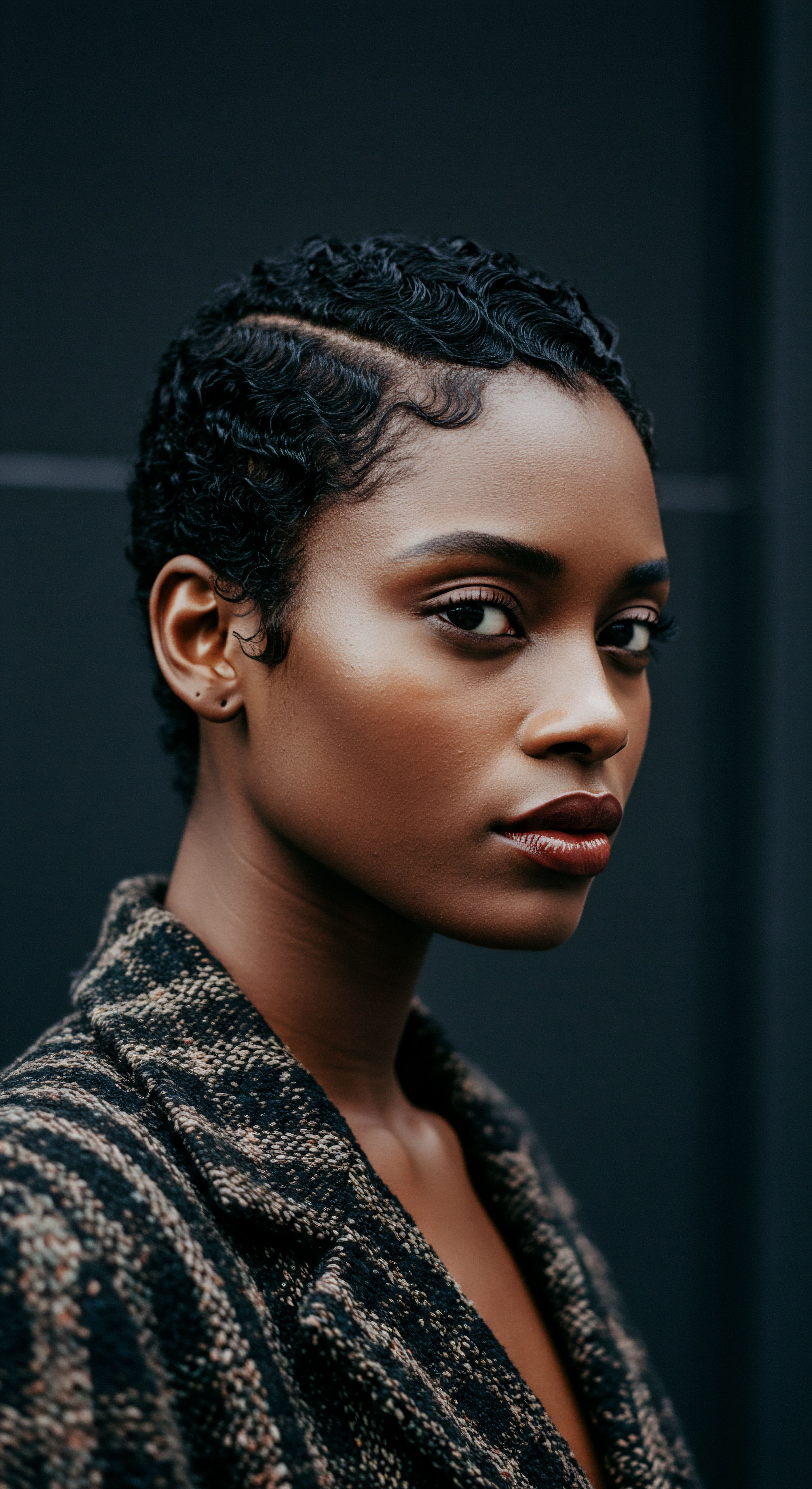
Protective Styling Encyclopedia
Protective styles, such as braids, twists, and cornrows, have a long and storied history in various cultures, particularly within African communities. Beyond their aesthetic appeal and symbolic significance, these styles served a vital purpose ❉ to shield delicate hair strands from environmental damage and reduce daily manipulation, thereby preserving length. Scientific studies today corroborate this intuitive understanding. By tucking away the hair ends, the oldest and most fragile parts of the hair shaft, these styles significantly reduce exposure to friction, tangling, and breakage.
However, the science also illuminates a cautionary aspect ❉ tension. While protective styles are beneficial, excessive tightness can lead to traction alopecia, a form of hair loss caused by persistent pulling on the hair follicles. A survey identified frequent cornrow styling and friction on chemically straightened hair as considerable traction alopecia risk factors.
This modern understanding reinforces the importance of the gentle hand often emphasized in traditional hair practices, where comfort was prioritized alongside style. The wisdom was not merely about creating a look, but about preserving the hair’s integrity for the long term.
| Style Braids (e.g. cornrows, box braids) |
| Traditional Context Identity, status, cultural expression; minimized daily manipulation. |
| Scientific Benefit Reduces friction and tangling, preserves length, minimizes daily styling stress. |
| Style Twists (e.g. two-strand twists) |
| Traditional Context Often used for softer styles, easier detangling. |
| Scientific Benefit Similar to braids, offers low manipulation, aids moisture retention. |
| Style Buns and Up-dos |
| Traditional Context Neatness, practicality, adornment; keeps hair contained. |
| Scientific Benefit Minimizes exposure to elements, reduces mechanical abrasion. |
| Style These styles, when executed gently, align with modern principles of hair health by minimizing stress. |
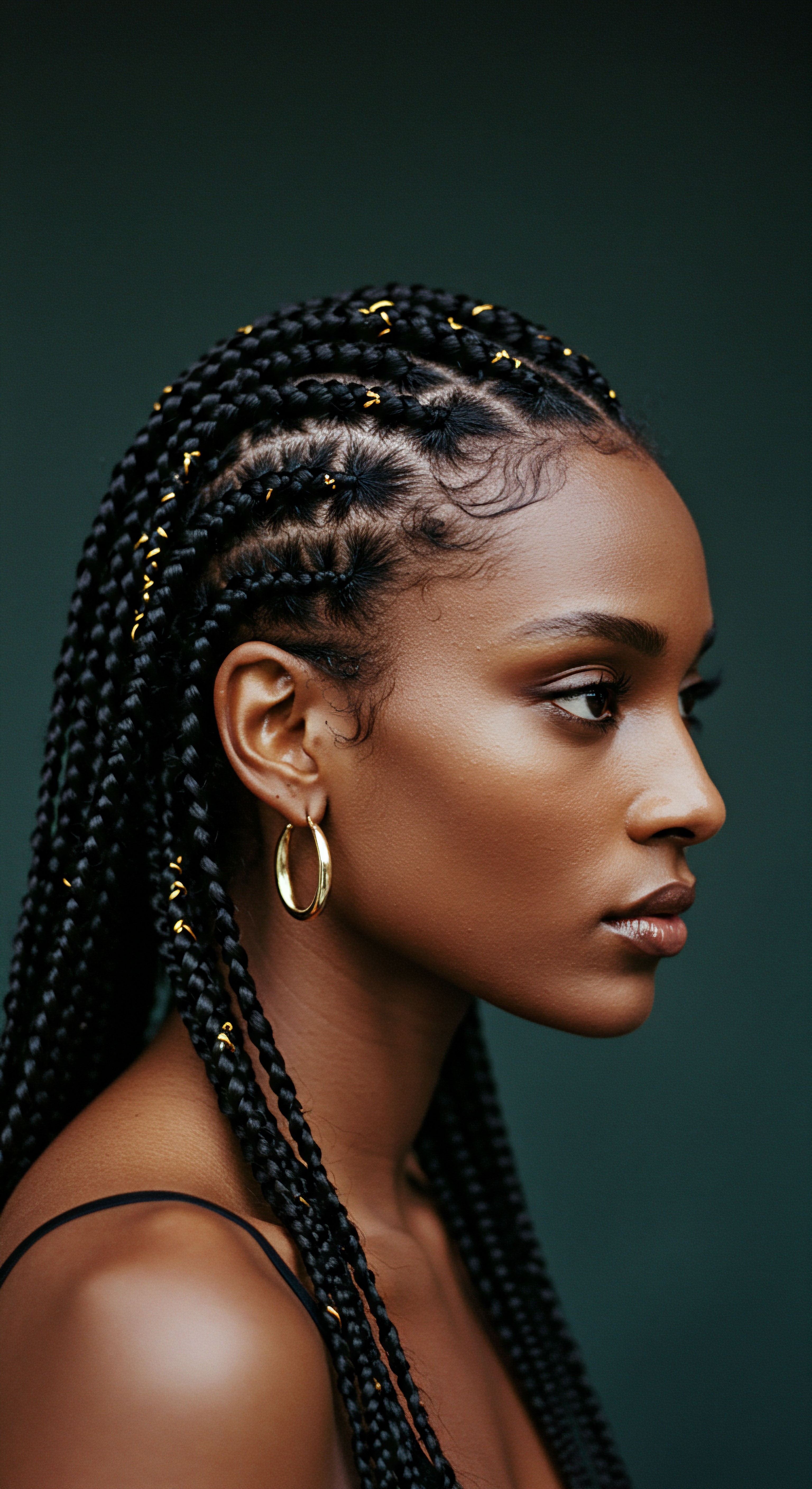
Natural Styling and Definition Techniques
Defining natural curl patterns has been a pursuit across generations. Practices like ‘shingling’ or ‘finger coiling,’ which involve meticulously shaping individual curls, have historical parallels in techniques that used natural plant gels or butters to clump and define coils. The scientific validity here lies in enhancing the hair’s natural conformation. When curls are well-defined, they are less prone to tangling and frizz, as the hair strands are organized and less likely to rub against each other haphazardly.
The use of natural humectants and emollients, derived from plants, in these historical practices is particularly relevant. Substances like aloe vera, flaxseed gel, or okra mucilage, intuitively used for their slippery texture, provide lubrication that reduces friction during styling and helps seal the cuticle, promoting shine and moisture retention. A study highlighted the potential of plant-derived mucilage, such as that from chia seeds, to promote hair regrowth by activating cellular energy metabolism processes.
Similarly, mucilage from Litsea glutinosa leaves was shown to stimulate the growth of cultured human hair follicles. This suggests a deeper scientific basis for the historical use of such plant extracts beyond simple conditioning.
The gentle art of natural styling, perfected over time, reduces friction and tangling, mirroring scientific understanding of hair fiber integrity.
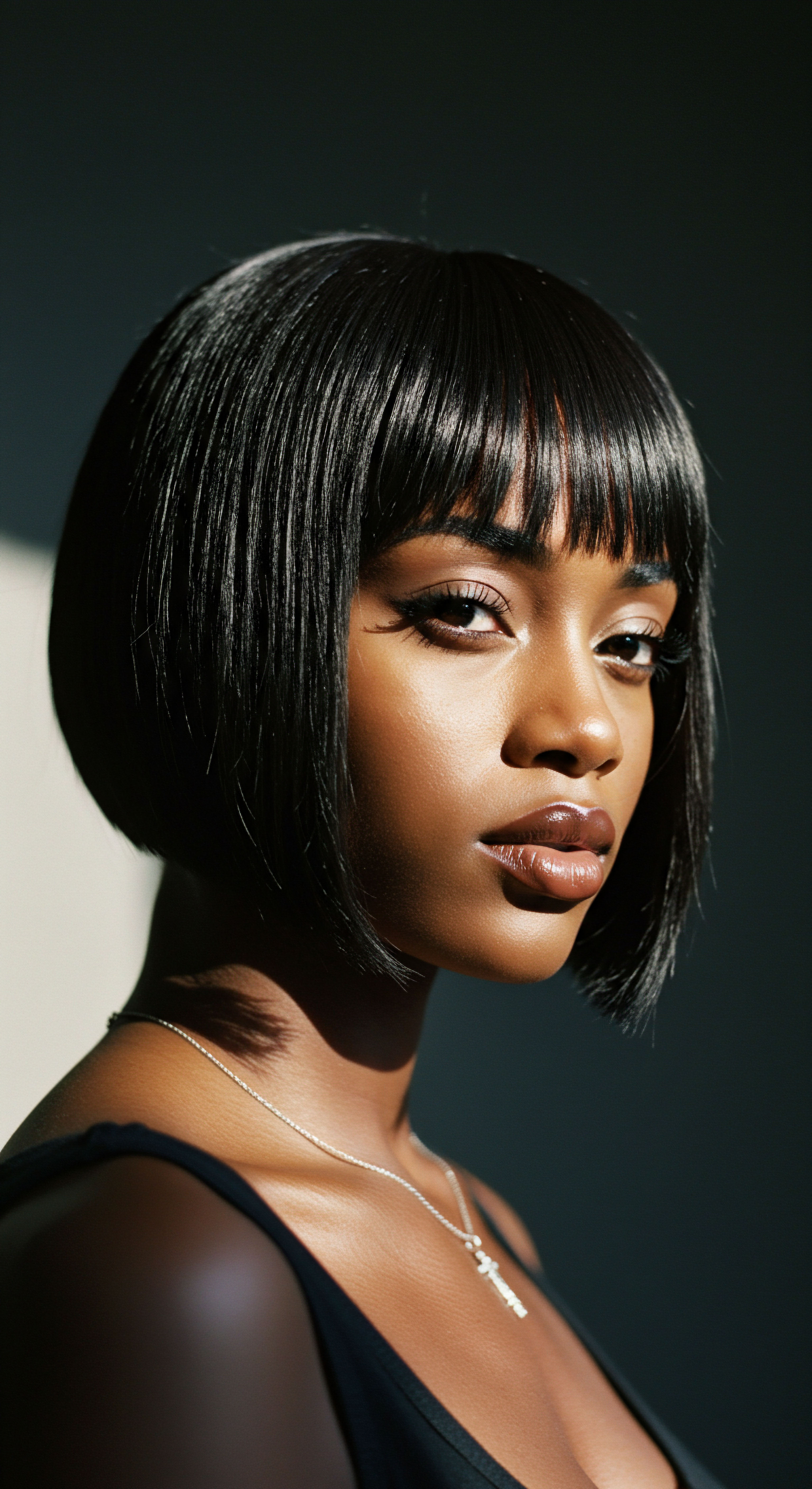
Heat Styling and Thermal Reconditioning
While the natural hair movement celebrates unprocessed textures, historical practices also included methods for altering hair texture, often involving heat. Hot combs, for instance, were used to straighten hair. Today, we understand the significant damage excessive heat can inflict on the hair shaft, leading to cuticle lifting, protein denaturation, and ultimately, breakage. This modern scientific insight cautions against practices that prioritize temporary styling over long-term hair health.
The contrast between historical methods and contemporary scientific understanding highlights a key area of progress. Early practices often lacked the knowledge of heat protectants or the precise temperature controls available today. Scientific research has shown that thermal stress can significantly increase hair breakage, and pretreatment with specific polymers can offer protection against thermal degradation of keratin. This underscores the value of modern advancements in mitigating the risks associated with heat, allowing for more informed choices.
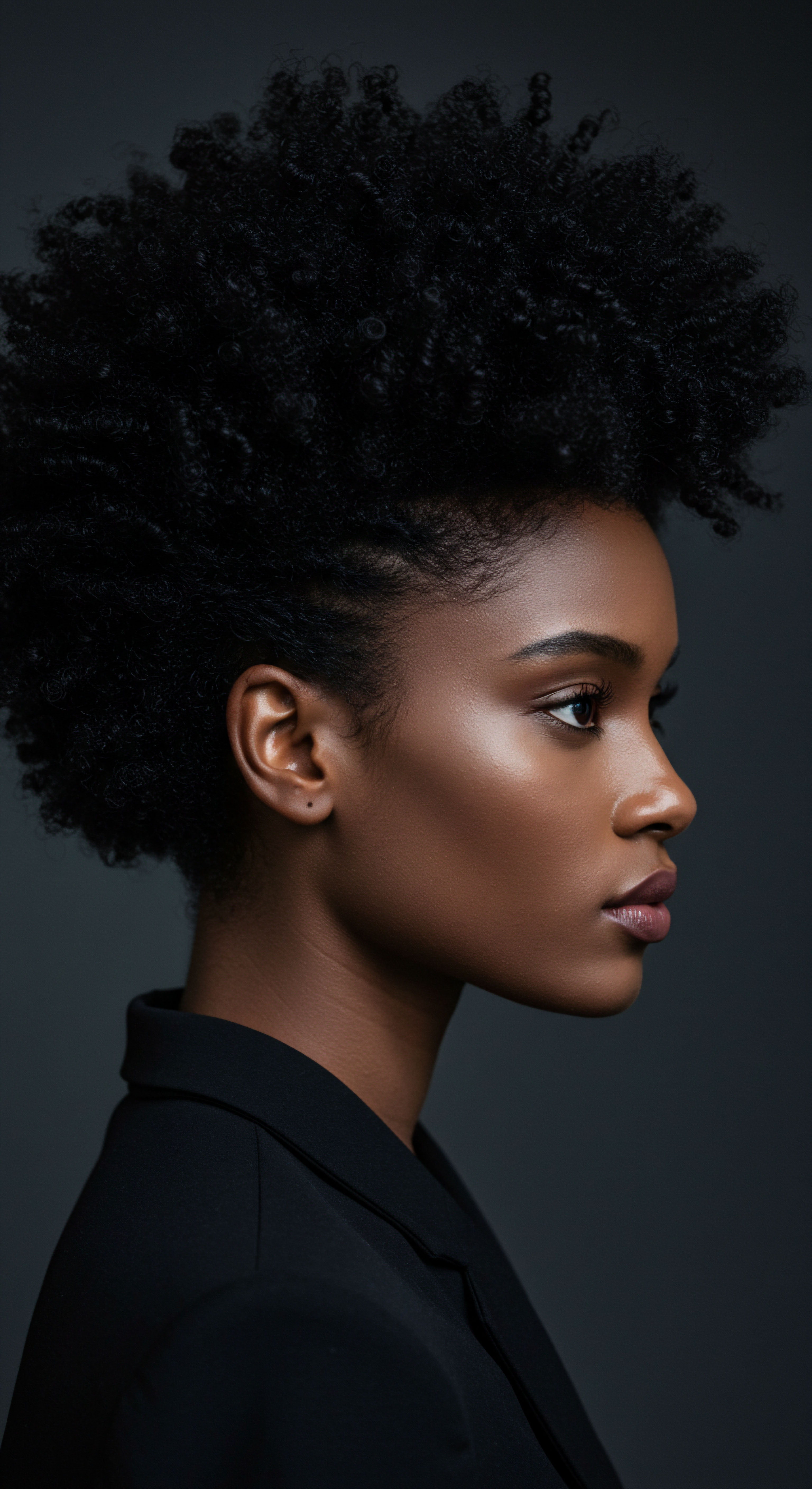
The Complete Textured Hair Toolkit
The tools used for textured hair care have evolved, yet their underlying principles often remain consistent with historical needs. Wide-tooth combs, preferred for detangling textured hair, minimize mechanical stress compared to fine-tooth combs. This preference aligns with scientific understanding that coarser teeth reduce friction and pulling, thereby preventing cuticle damage and breakage. Similarly, fingers were often the primary detangling tool, offering an unparalleled sensitivity to knots and tangles, allowing for gentle separation.
Traditional implements for parting, sectioning, and styling, though simple, were designed to handle the unique properties of textured hair with care. The materials used, whether wood, bone, or horn, often possessed smooth surfaces that reduced snagging. This thoughtful selection of tools, even in ancient times, reflects an intuitive understanding of hair’s delicate nature and the importance of minimizing friction.
- Wide-Tooth Combs ❉ Reduce snagging and breakage by minimizing friction on delicate coils.
- Fingers ❉ Allow for sensitive detection and gentle untangling of knots, preserving hair integrity.
- Smooth Styling Tools ❉ Historically crafted from materials that would not abrade the hair cuticle.
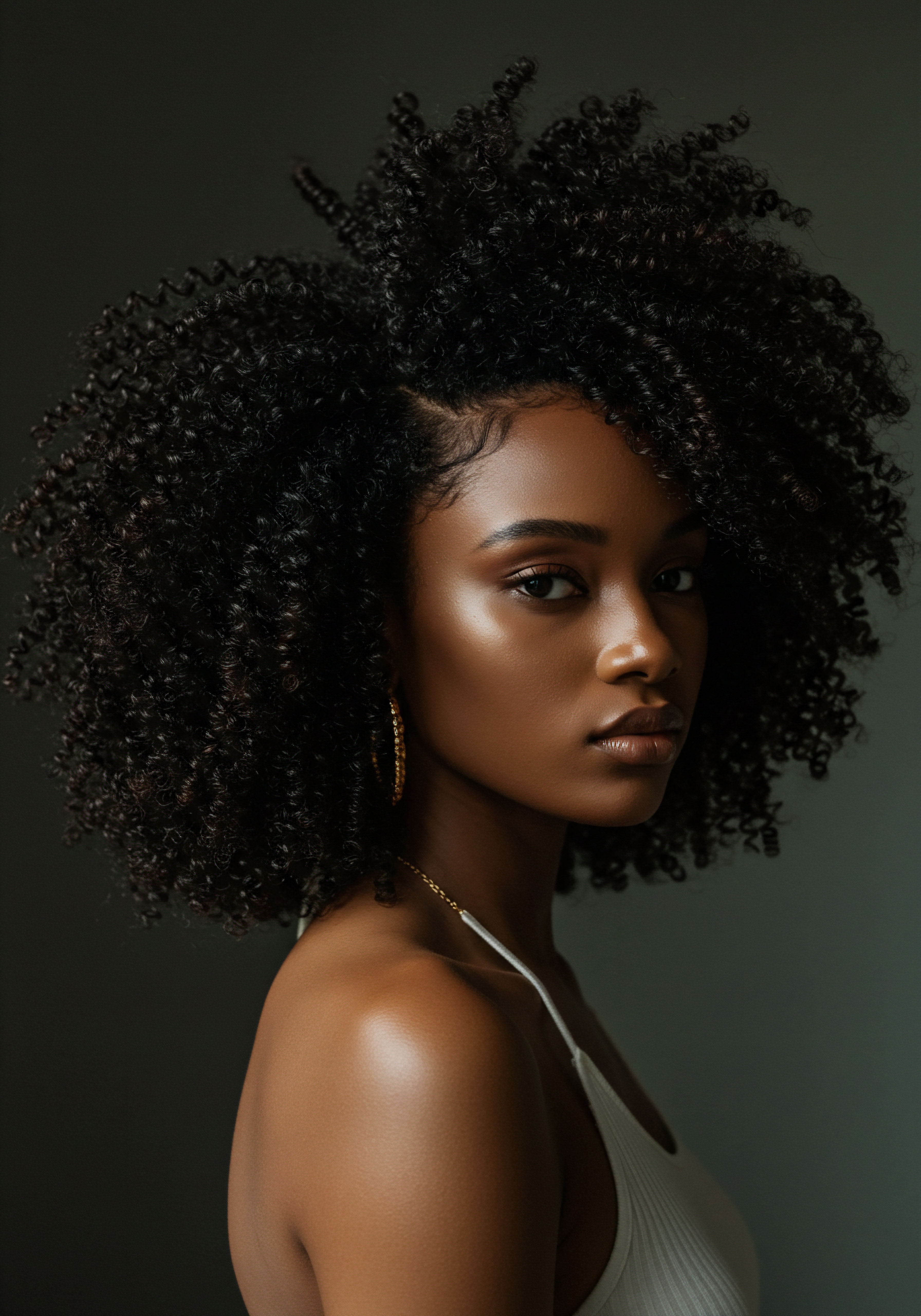
Relay
Moving beyond the foundational and the ritualistic, we arrive at a space where the profound interplay of science, culture, and individual experience truly converges. This exploration delves into the less apparent complexities of textured hair care, examining how ancestral practices, often rooted in necessity and passed down through generations, find compelling validation in contemporary scientific research. How does the quiet wisdom of historical hair care, steeped in cultural significance, translate into tangible benefits supported by modern understanding? This journey into the deeper layers of hair health reveals a fascinating dialogue between past and present.
The story of textured hair is not merely one of physical attributes, but a narrative interwoven with social structures, personal identity, and the enduring strength of communities. Understanding this broader context allows us to appreciate the true depth of historical practices, recognizing them not as quaint traditions, but as sophisticated systems of care that addressed the unique biological and environmental realities of textured hair.

Building Personalized Textured Hair Regimens
The concept of a personalized hair care regimen, so popular today, has deep historical roots. Ancestral communities understood that what worked for one person might not work for another, even within the same family or village. This bespoke approach was born from keen observation and a practical understanding of individual hair responses to different natural ingredients and methods. Modern science now provides the molecular and genetic underpinnings for this variability.
Research confirms significant differences between African, Asian, and European hair types in terms of density and growth rate. This variability underscores the continued need for tailored care, a principle long practiced.
The historical application of various plant-based oils and butters, like shea butter or coconut oil, often varied based on climate, available resources, and perceived hair needs. These practices intuitively addressed the need for lubrication and moisture retention, especially crucial for textured hair which is prone to dryness due to its coiled structure and lifted cuticle. A systematic review on coconut, castor, and argan oil found that coconut oil has been shown to treat brittle hair and hair infestation clinically.
However, another study found that while coconut, avocado, and argan oils penetrate textured hair, their effect on mechanical properties like tensile strength was limited compared to straight hair, highlighting the complex interaction between oils and textured hair morphology. This shows that while historical practices often had a beneficial effect, the precise scientific mechanism and extent of benefit can be more nuanced than initially assumed.
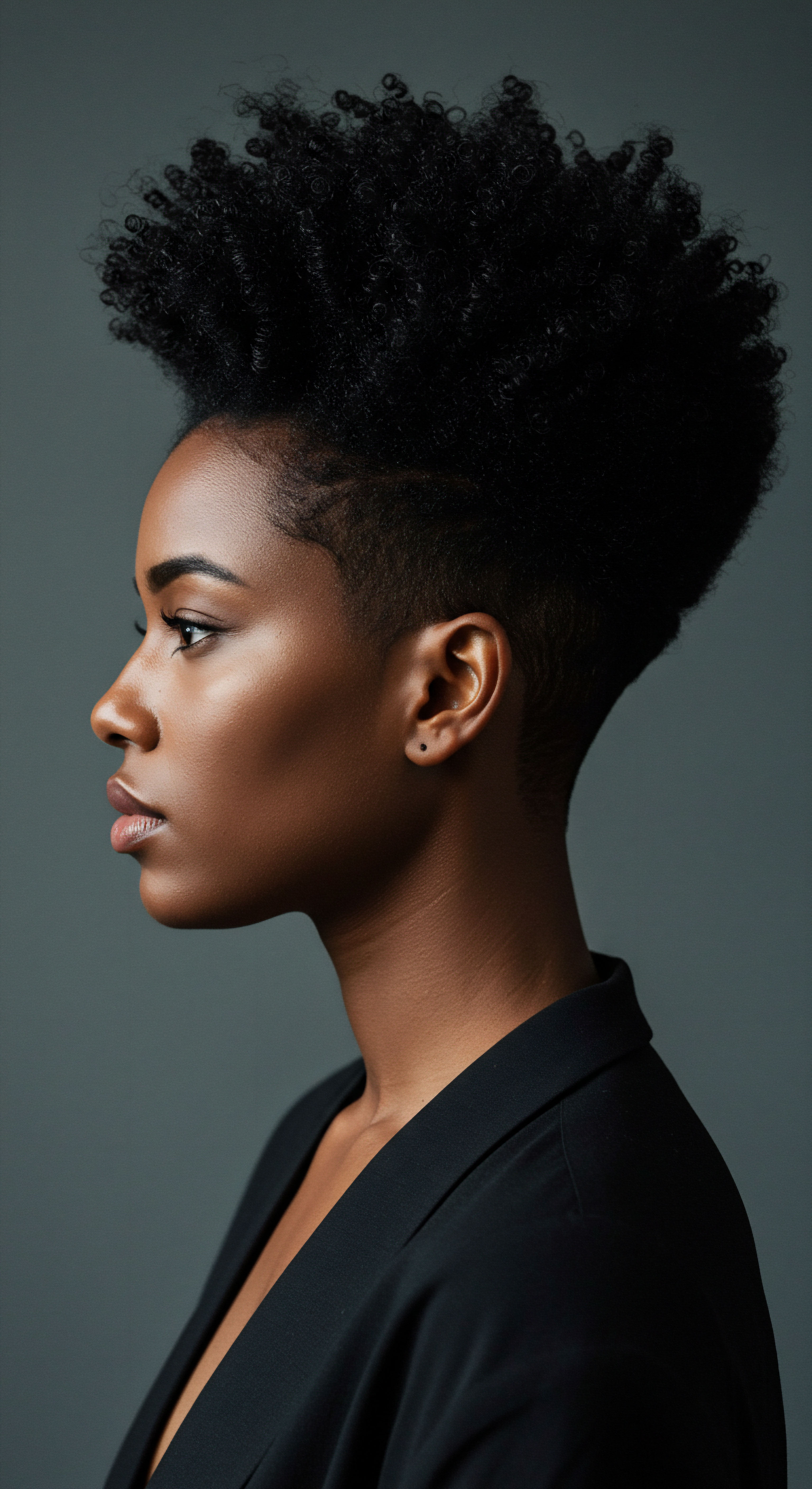
The Nighttime Sanctuary ❉ Essential Sleep Protection and Bonnet Wisdom
The practice of covering hair at night, using headwraps, scarves, or bonnets, is a widespread historical tradition across many cultures with textured hair. This practice was not simply about preserving a hairstyle; it was a protective measure against mechanical abrasion and moisture loss during sleep. Scientific understanding now strongly validates this ancient wisdom. As we move and shift during the night, hair rubs against pillowcases, causing friction that can lift the cuticle, leading to frizz, tangling, and breakage.
A study published in the Journal of Cosmetic Dermatology confirms that smoother fabrics like silk help prevent hair shaft damage caused by repeated friction. Another study notes that silk’s ultra-smooth fibers reduce resistance, allowing hair to glide effortlessly, thereby minimizing breakage and frizz. While anecdotal evidence has long supported the benefits of silk and satin for hair, this scientific corroboration provides a compelling reason to continue this historical practice. The smooth surface of these materials significantly reduces the coefficient of friction between hair and bedding, safeguarding the delicate cuticle layer.
The timeless practice of covering hair at night with smooth fabrics finds strong scientific support in mitigating friction and preserving hair integrity.
This protective measure is particularly vital for textured hair, which is inherently more prone to mechanical damage due to its unique structural characteristics. The coiled nature of textured hair means there are more points of contact with surfaces, increasing the potential for friction-induced damage. Head coverings also help maintain the hair’s natural moisture balance, preventing the absorption of oils by absorbent fabrics like cotton.
- Reduced Friction ❉ Smooth fabrics allow hair to glide, minimizing cuticle damage.
- Moisture Retention ❉ Non-absorbent materials help hair preserve its natural oils and hydration.
- Style Preservation ❉ Protects hairstyles from being disturbed or flattened during sleep.

Ingredient Deep Dives for Textured Hair Needs
Many historical hair care practices relied on locally sourced natural ingredients. Clay washes, herbal rinses, and plant-based oils were common. The scientific validity of these ingredients lies in their active compounds.
For example, certain clays possess adsorbent properties, effectively cleansing the scalp and hair without stripping essential moisture, similar to modern gentle clarifying shampoos. Herbal rinses often contained compounds with anti-inflammatory, antimicrobial, or conditioning properties.
Consider the traditional use of plant saponins, found in ingredients like Shikakai or Reetha (soap nuts), as natural cleansing agents. These plants produce a mild lather and were historically used for washing hair. Scientific reviews acknowledge that while they may not provide the same lather as synthetic detergents, they offer gentler cleansing options.
Reetha, for instance, is noted for its antimicrobial properties and ability to restore natural hair texture. This highlights a convergence of traditional wisdom and modern understanding of gentle, effective cleansing.
The use of specific plant extracts for hair growth stimulation also has some scientific backing. While more research is always needed, compounds found in plants like hibiscus, traditionally used for hair care, are being investigated for their potential to activate hair follicle formation and extend the hair growth phase. This illustrates how ancient remedies, once understood purely through observation, are now being dissected at a molecular level.
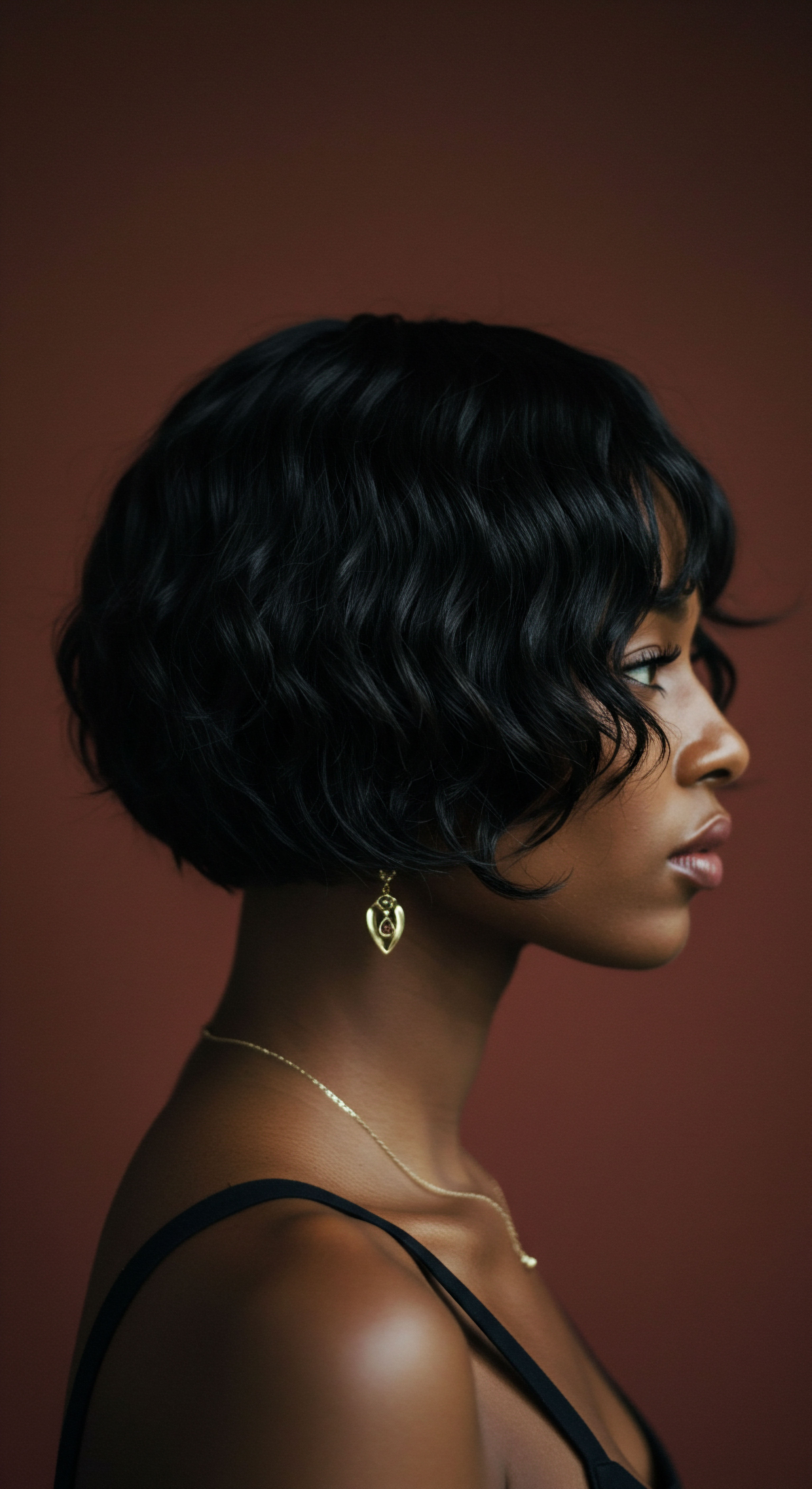
Textured Hair Problem Solving Compendium
Historical practices often provided solutions for common textured hair concerns. For dryness, oils and butters were applied. For tangles, careful finger detangling or wide-tooth combs were employed.
For breakage, protective styles were adopted. These solutions, while lacking a modern scientific label, intuitively addressed the underlying issues.
For instance, the historical emphasis on oiling the scalp and hair directly addresses the challenge of dryness in textured hair. Due to its coiled structure, natural sebum from the scalp struggles to travel down the entire hair shaft, leaving the ends particularly vulnerable to dryness. Regular application of external emollients, a cornerstone of traditional care, provides the necessary lubrication and moisture seal.
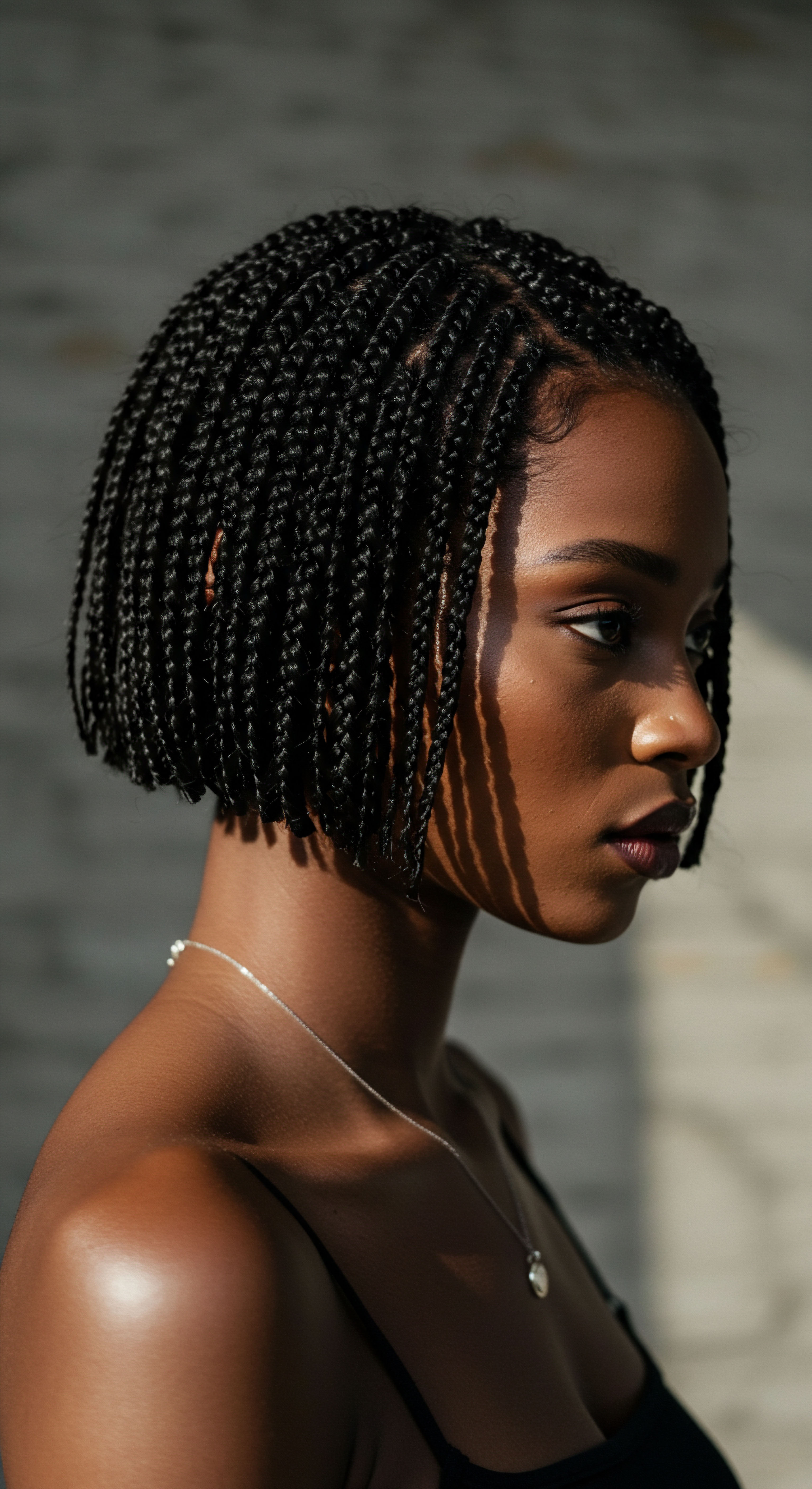
Holistic Influences on Hair Health
Beyond topical applications, historical hair care was often integrated into a broader holistic approach to wellness. Diet, stress management, and community support were all recognized as influencing overall health, including hair vitality. Modern trichology and dermatology increasingly acknowledge these interconnected factors. Nutritional deficiencies, chronic stress, and certain health conditions can manifest as hair thinning, breakage, or scalp issues.
The communal aspect of hair care in many cultures, where styling was a social activity, provided not only practical assistance but also emotional well-being. This collective care likely contributed to reduced stress, a factor known to impact hair health. The connection between mental and physical well-being and the condition of one’s hair is a holistic understanding that spans centuries, finding continued resonance in contemporary wellness practices.
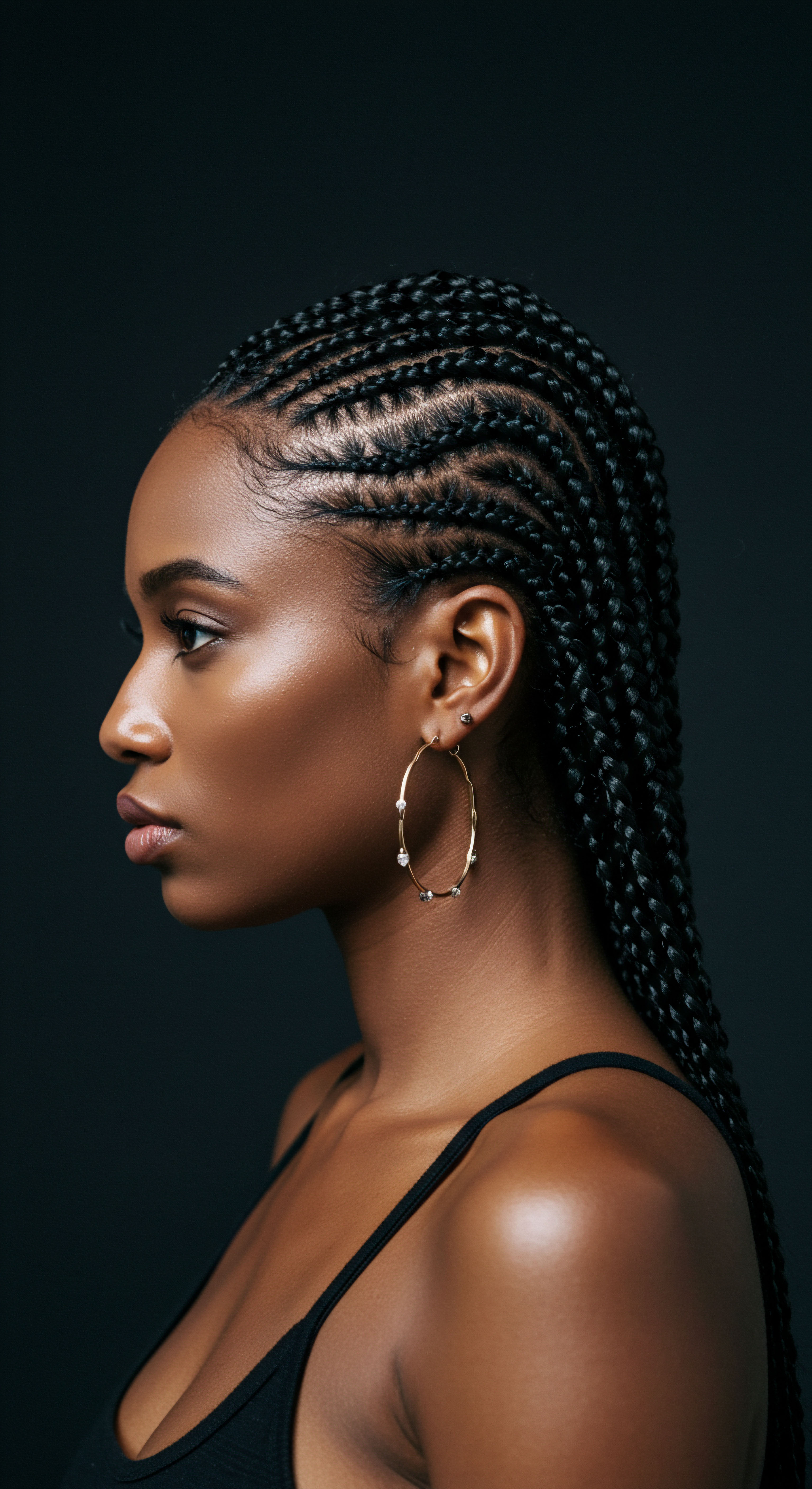
Relay
Moving beyond the foundational and the ritualistic, we arrive at a space where the profound interplay of science, culture, and individual experience truly converges. This exploration delves into the less apparent complexities of textured hair care, examining how ancestral practices, often rooted in necessity and passed down through generations, find compelling validation in contemporary scientific research. How does the quiet wisdom of historical hair care, steeped in cultural significance, translate into tangible benefits supported by modern understanding? This journey into the deeper layers of hair health reveals a fascinating dialogue between past and present.
The story of textured hair is not merely one of physical attributes, but a narrative interwoven with social structures, personal identity, and the enduring strength of communities. Understanding this broader context allows us to appreciate the true depth of historical practices, recognizing them not as quaint traditions, but as sophisticated systems of care that addressed the unique biological and environmental realities of textured hair.
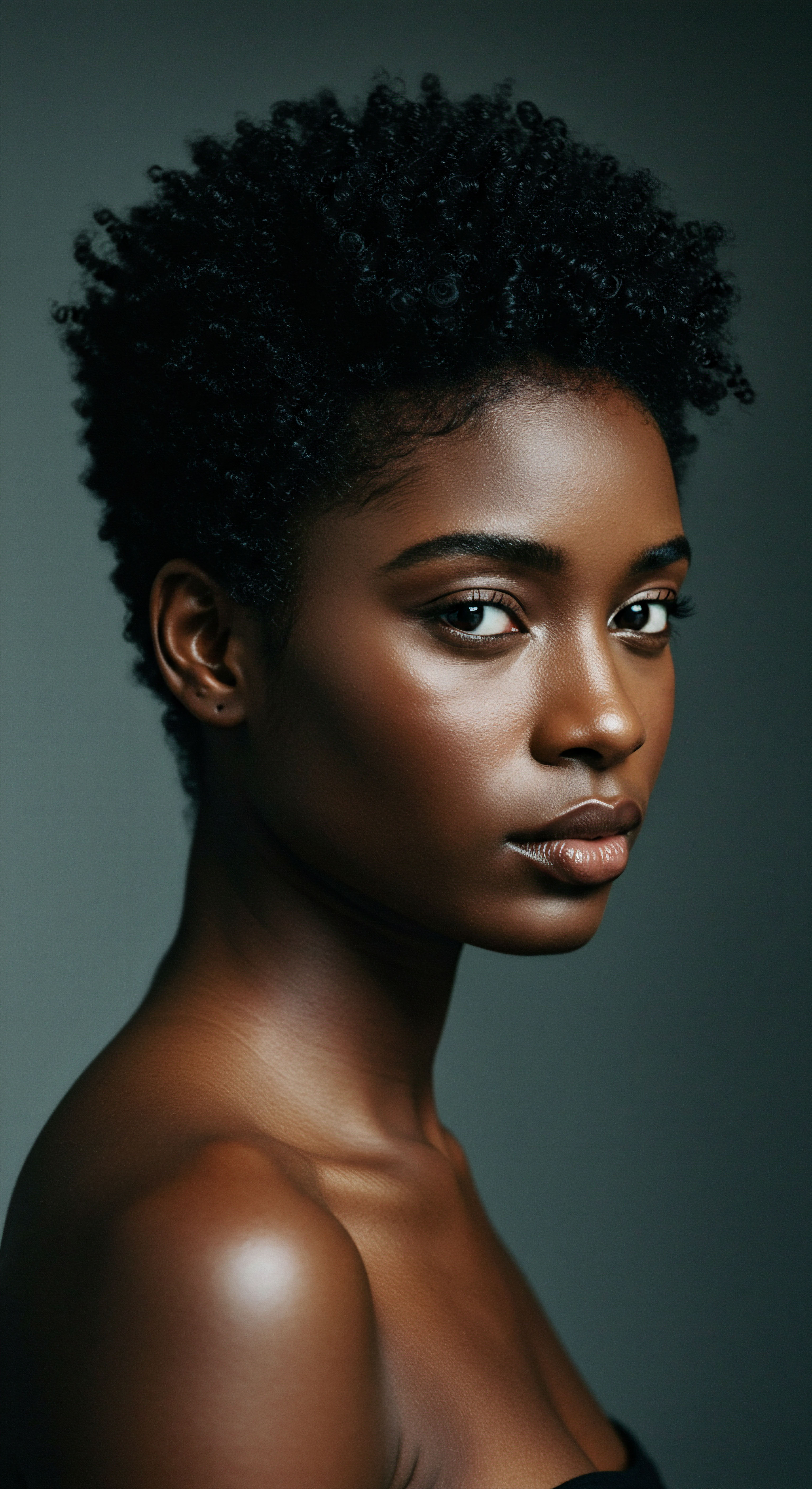
Building Personalized Textured Hair Regimens
The concept of a personalized hair care regimen, so popular today, has deep historical roots. Ancestral communities understood that what worked for one person might not work for another, even within the same family or village. This bespoke approach was born from keen observation and a practical understanding of individual hair responses to different natural ingredients and methods. Modern science now provides the molecular and genetic underpinnings for this variability.
Research confirms significant differences between African, Asian, and European hair types in terms of density and growth rate. This variability underscores the continued need for tailored care, a principle long practiced.
The historical application of various plant-based oils and butters, like shea butter or coconut oil, often varied based on climate, available resources, and perceived hair needs. These practices intuitively addressed the need for lubrication and moisture retention, especially crucial for textured hair which is prone to dryness due to its coiled structure and lifted cuticle. A systematic review on coconut, castor, and argan oil found that coconut oil has been shown to treat brittle hair and hair infestation clinically.
However, another study found that while coconut, avocado, and argan oils penetrate textured hair, their effect on mechanical properties like tensile strength was limited compared to straight hair, highlighting the complex interaction between oils and textured hair morphology. This shows that while historical practices often had a beneficial effect, the precise scientific mechanism and extent of benefit can be more nuanced than initially assumed.
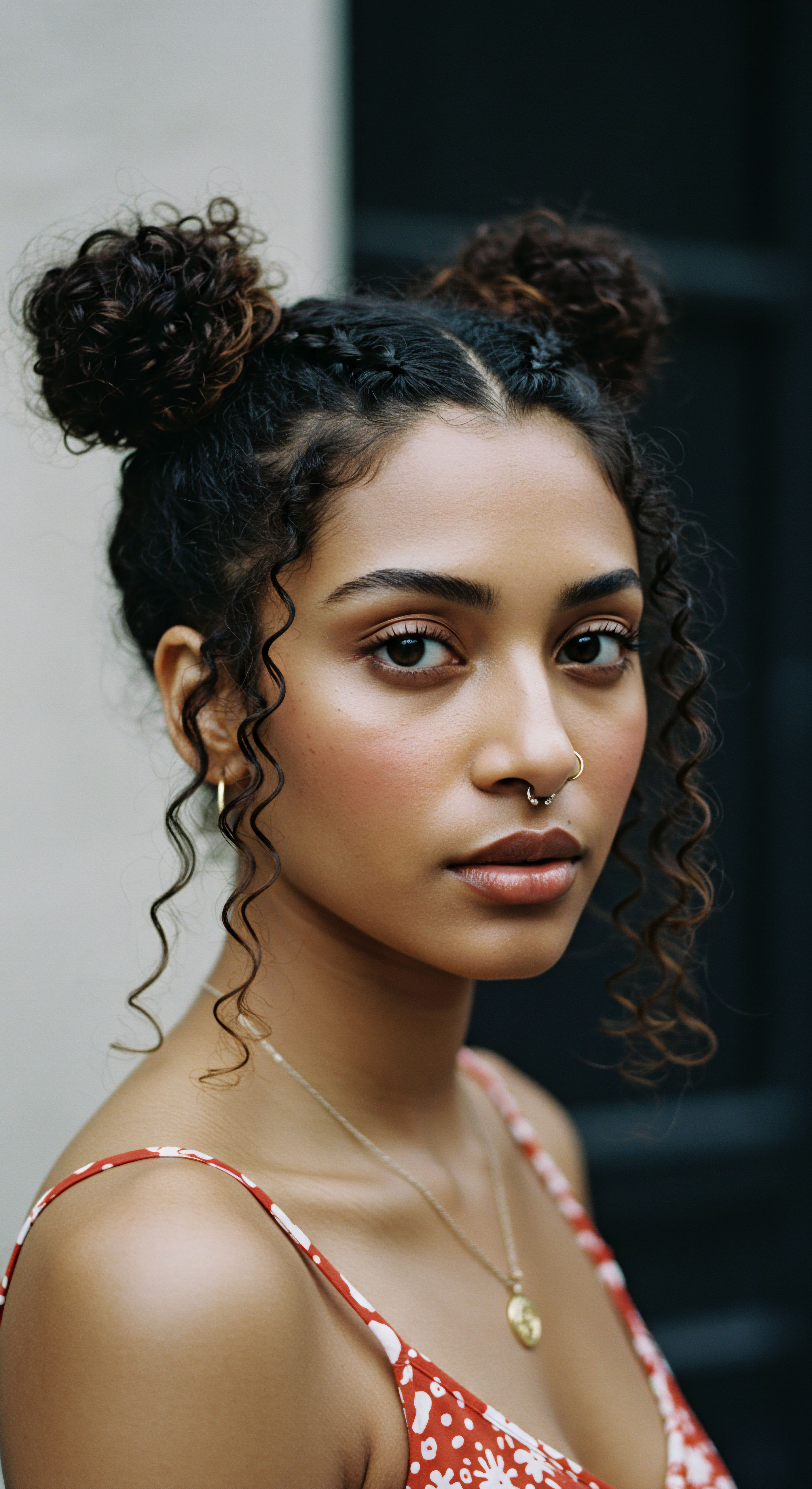
The Nighttime Sanctuary ❉ Essential Sleep Protection and Bonnet Wisdom
The practice of covering hair at night, using headwraps, scarves, or bonnets, is a widespread historical tradition across many cultures with textured hair. This practice was not simply about preserving a hairstyle; it was a protective measure against mechanical abrasion and moisture loss during sleep. Scientific understanding now strongly validates this ancient wisdom. As we move and shift during the night, hair rubs against pillowcases, causing friction that can lift the cuticle, leading to frizz, tangling, and breakage.
A study published in the Journal of Cosmetic Dermatology confirms that smoother fabrics like silk help prevent hair shaft damage caused by repeated friction. Another study notes that silk’s ultra-smooth fibers reduce resistance, allowing hair to glide effortlessly, thereby minimizing breakage and frizz. While anecdotal evidence has long supported the benefits of silk and satin for hair, this scientific corroboration provides a compelling reason to continue this historical practice. The smooth surface of these materials significantly reduces the coefficient of friction between hair and bedding, safeguarding the delicate cuticle layer.
The timeless practice of covering hair at night with smooth fabrics finds strong scientific support in mitigating friction and preserving hair integrity.
This protective measure is particularly vital for textured hair, which is inherently more prone to mechanical damage due to its unique structural characteristics. The coiled nature of textured hair means there are more points of contact with surfaces, increasing the potential for friction-induced damage. Head coverings also help maintain the hair’s natural moisture balance, preventing the absorption of oils by absorbent fabrics like cotton.
- Reduced Friction ❉ Smooth fabrics allow hair to glide, minimizing cuticle damage.
- Moisture Retention ❉ Non-absorbent materials help hair preserve its natural oils and hydration.
- Style Preservation ❉ Protects hairstyles from being disturbed or flattened during sleep.
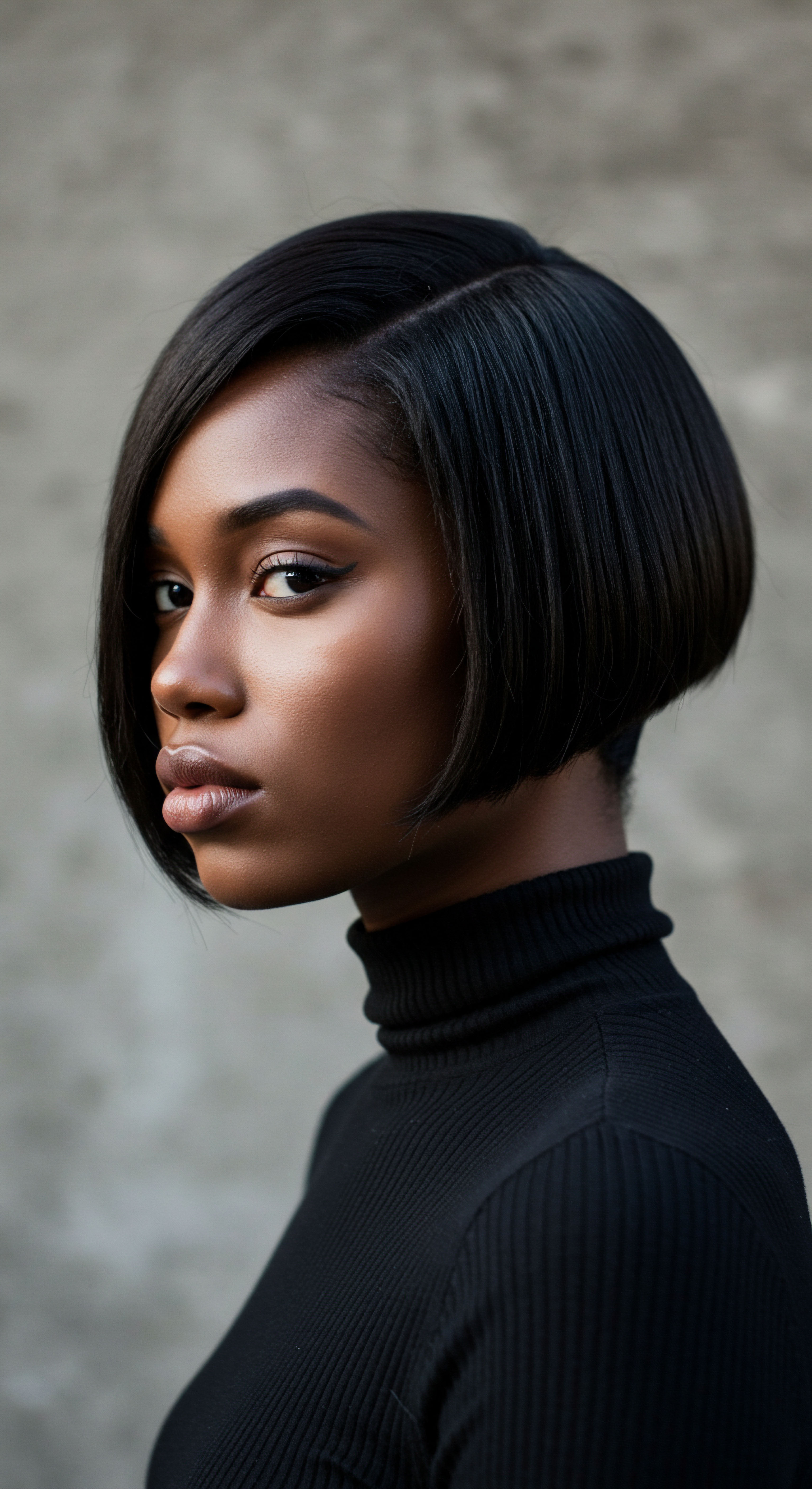
Ingredient Deep Dives for Textured Hair Needs
Many historical hair care practices relied on locally sourced natural ingredients. Clay washes, herbal rinses, and plant-based oils were common. The scientific validity of these ingredients lies in their active compounds.
For example, certain clays possess adsorbent properties, effectively cleansing the scalp and hair without stripping essential moisture, similar to modern gentle clarifying shampoos. Herbal rinses often contained compounds with anti-inflammatory, antimicrobial, or conditioning properties.
Consider the traditional use of plant saponins, found in ingredients like Shikakai or Reetha (soap nuts), as natural cleansing agents. These plants produce a mild lather and were historically used for washing hair. Scientific reviews acknowledge that while they may not provide the same lather as synthetic detergents, they offer gentler cleansing options.
Reetha, for instance, is noted for its antimicrobial properties and ability to restore natural hair texture. This highlights a convergence of traditional wisdom and modern understanding of gentle, effective cleansing.
The use of specific plant extracts for hair growth stimulation also has some scientific backing. While more research is always needed, compounds found in plants like hibiscus, traditionally used for hair care, are being investigated for their potential to activate hair follicle formation and extend the hair growth phase. This illustrates how ancient remedies, once understood purely through observation, are now being dissected at a molecular level.
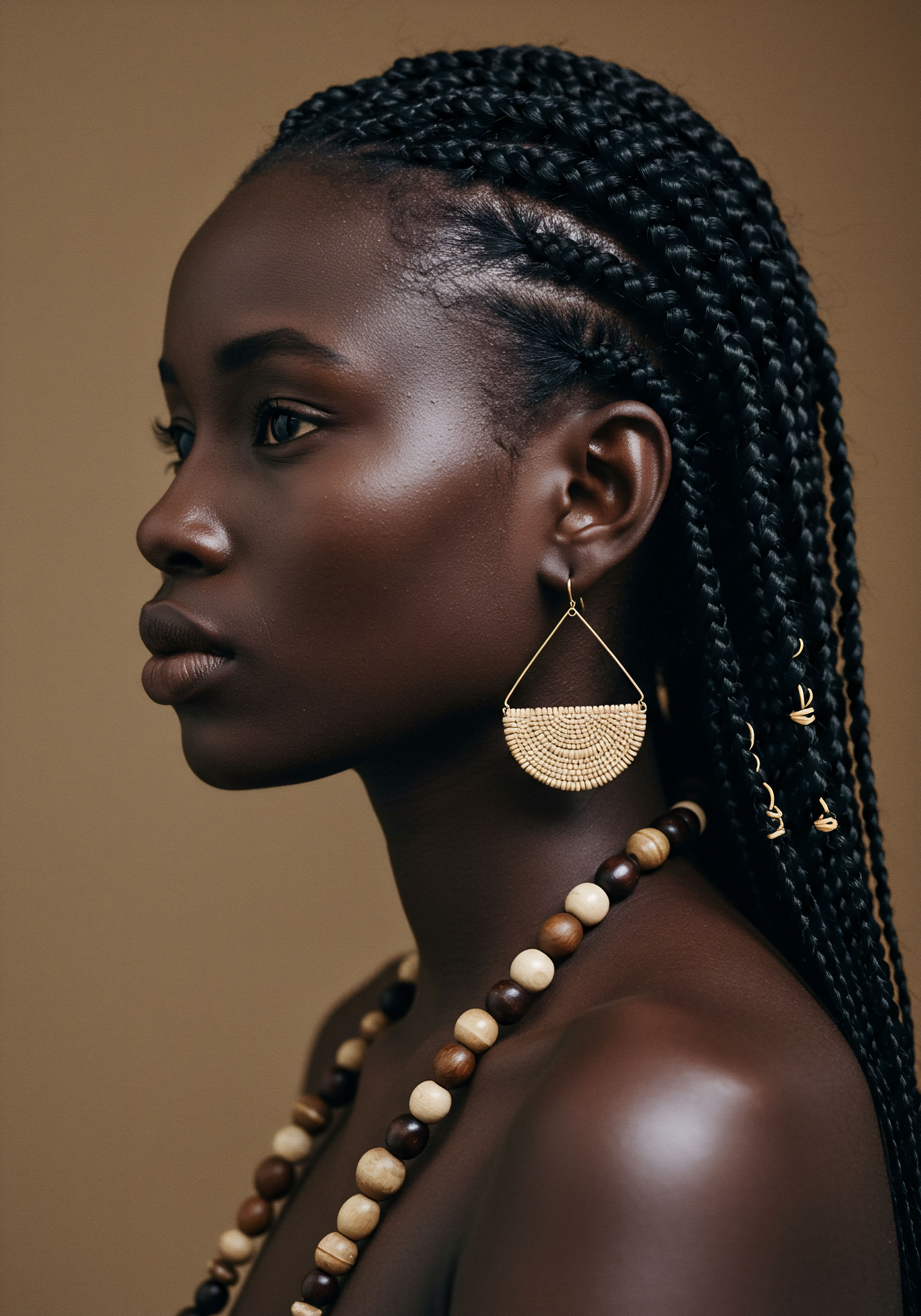
Textured Hair Problem Solving Compendium
Historical practices often provided solutions for common textured hair concerns. For dryness, oils and butters were applied. For tangles, careful finger detangling or wide-tooth combs were employed.
For breakage, protective styles were adopted. These solutions, while lacking a modern scientific label, intuitively addressed the underlying issues.
For instance, the historical emphasis on oiling the scalp and hair directly addresses the challenge of dryness in textured hair. Due to its coiled structure, natural sebum from the scalp struggles to travel down the entire hair shaft, leaving the ends particularly vulnerable to dryness. Regular application of external emollients, a cornerstone of traditional care, provides the necessary lubrication and moisture seal.
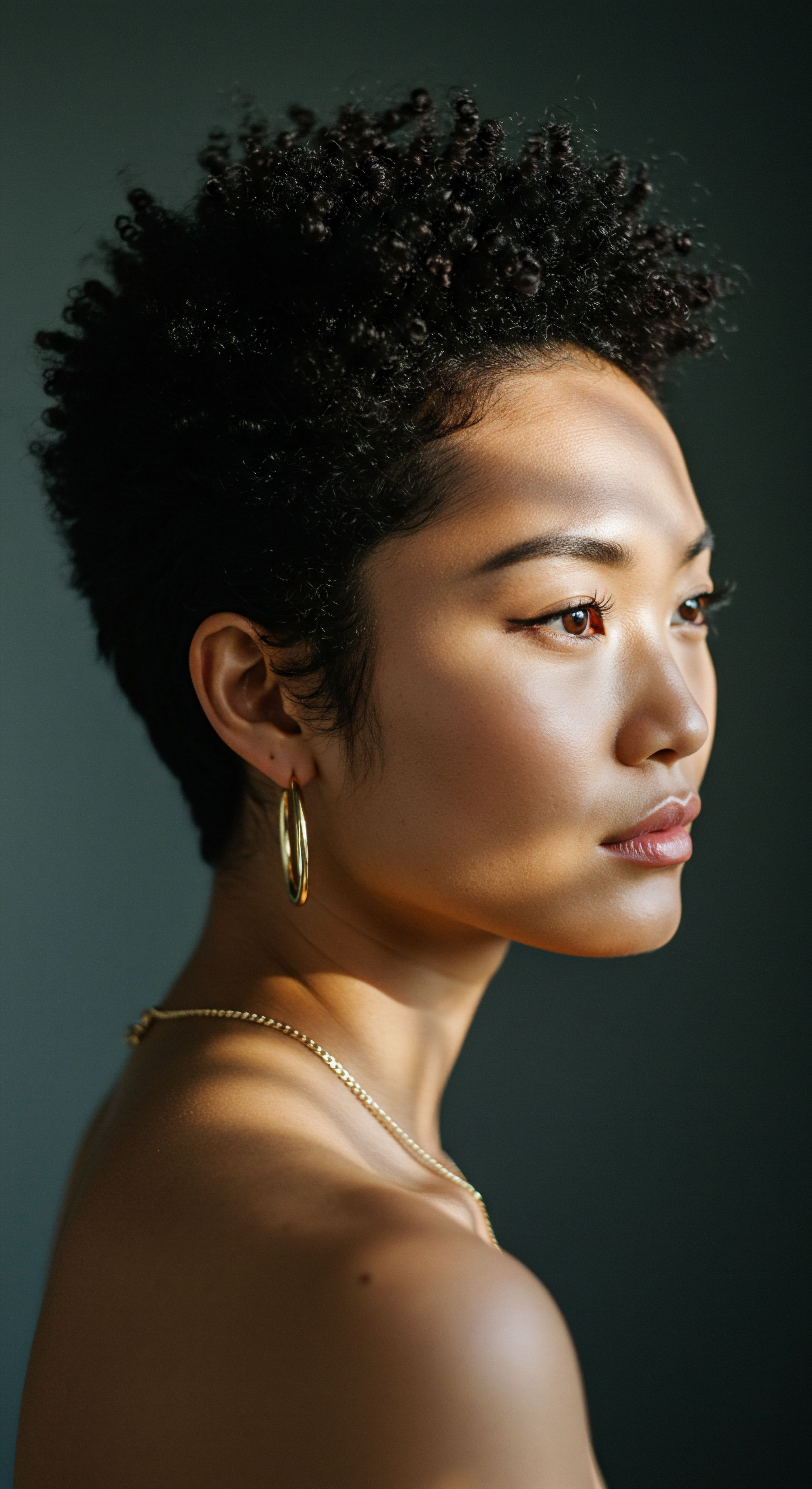
Holistic Influences on Hair Health
Beyond topical applications, historical hair care was often integrated into a broader holistic approach to wellness. Diet, stress management, and community support were all recognized as influencing overall health, including hair vitality. Modern trichology and dermatology increasingly acknowledge these interconnected factors. Nutritional deficiencies, chronic stress, and certain health conditions can manifest as hair thinning, breakage, or scalp issues.
The communal aspect of hair care in many cultures, where styling was a social activity, provided not only practical assistance but also emotional well-being. This collective care likely contributed to reduced stress, a factor known to impact hair health. The connection between mental and physical well-being and the condition of one’s hair is a holistic understanding that spans centuries, finding continued resonance in contemporary wellness practices.

Reflection
As we draw this exploration to a close, a quiet realization settles ❉ the echoes of history resonate deeply within the scientific validity of today’s textured hair care. The hands that once kneaded butters from the earth, the voices that shared wisdom of gentle detangling, and the communities that celebrated diverse hair expressions were, in their own way, pioneers of hair science. Their practices, honed through generations of observation and intuitive understanding, often aligned with the intricate biomechanical and chemical realities of textured hair.
We see that the past offers not just quaint stories, but a grounding presence of knowledge, a testament to enduring wisdom. The journey to understand textured hair is a continuous conversation, one where ancestral voices and scientific discoveries speak in beautiful synchronicity, inviting us to listen, learn, and honor the rich heritage held within every curl and coil.
References
- Shin, Y. & Park, C. (2025). Natural Polysaccharides and Oil Extracted from Plant-Based Chia Seed Mucilage for Hair Loss Treatment. Small .
- Lourenço, C.B. et al. (2024). Penetration of Vegetable Oils into Textured Hair Fibers ❉ Integrating Molecular Matrix Assisted Laser Desorption Ioni-Zation Time-of-Flight Mass Spectroscopy (MALDI TOF/TOF MS) Analysis with Mechanical Measurements. Cosmetics, 11(6), 212.
- Schwartz, A. M. & Knowles, D. C. (1963). Frictional Effects in Human Hair. Journal of the Society of Cosmetic Chemists, 14(2), 85-98. (Referenced in)
- Bhushan, B. et al. (2014). Friction Dynamics of Straight, Curly, and Wavy Hair. Journal of Cosmetic Science, 65(5), 295-309. (Referenced in)
- Robinson, V. (2019). The effect of grooming on the hair cuticle. Journal of Cosmetic Science, 70(1), 1-12.
- Sitthithaworn, W. et al. (2018). Mucilage powder from Litsea glutinosa leaves stimulates the growth of cultured human hair follicles. Songklanakarin Journal of Science and Technology, 40(5), 1076-1080.
- Wong, N. Williams, K. Tolliver, S. & Potts, G. (2025). Historical Perspectives on Hair Care and Common Styling Practices in Black Women. Cutis, 115(3), 95-99.
- Gaines, M. (2024). Science works to demystify hair and help it behave. Science News Explores .
- Oforiwa, A. (2023). The History and Culture of African Natural Hair ❉ From Ancient Times to Modern Trends. AMAKA Studio .
- Nchinech, N. et al. (2023). Plants Use in the Care and Management of Afro-Textured Hair ❉ A Survey of 100 Participants. Scholars Journal of Applied Medical Sciences, 11(11), 1984-1988.
- Pirogova, E. et al. (2024). The Genomic Variation in Textured Hair ❉ Implications in Developing a Holistic Hair Care Routine. Preprints.org .
- Draelos, Z. D. (2017). Hair Care Cosmetics ❉ From Traditional Shampoo to Solid Clay and Herbal Shampoo, A Review. MDPI Cosmetics, 6(1), 13.
- Draelos, Z. D. (2022). Coconut, Castor, and Argan Oil for Hair in Skin of Color Patients ❉ A Systematic Review. Journal of Drugs in Dermatology, 21(7), 751-757.
- Al-Ghadeer, R. et al. (2024). Hibiscus Flower Extract as a Natural Hair Growth Stimulant ❉ A Comprehensive Review of Mechanism and Application. International Journal of Research Publication and Reviews, 5(2), 2622-2644.
- El-Messiry, M. et al. (2017). Electric static charge generated from the sliding of head scarf textiles against skin and hair. IJSER, 7(6), 1142-1147. (Referenced in)